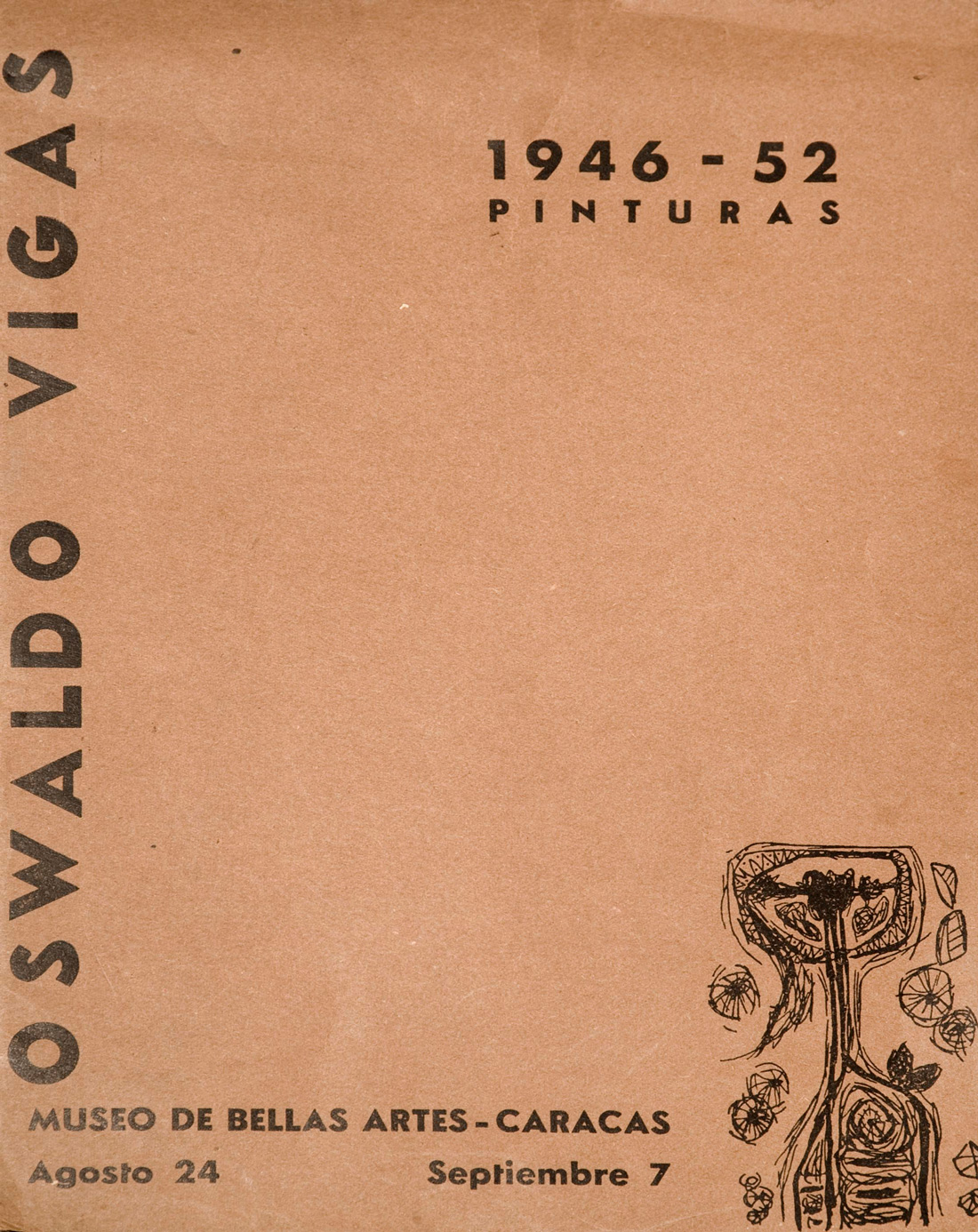Oswaldo Vigas 1946 – 52
Museo de Bellas Artes, Caracas, Venezuela
August 24th – September 7th
Oswaldo Vigas’ paintings, which have obvious Picasso-Braque roots, are a logical consequence of the new course of painting. However -and therein lies the greatest merit of his work-, Vigas is openly different from other fruits of the same tree, thanks to his unmistakable and overwhelming personality. He has his own mystery, his own lines, his own colors, and paints with passionate depth, and torn sensitivity.
Through the use of modern lines, he searches for the oldest artistic expression of our land, having faith in his destiny as an artist and waking up encountered vehement reactions of admiration or revulsion. I am among those who believe in the future of this young Venezuelan artist.
Miguel Otero Silva
I believe in his painting since the time -not so long ago- in which "Bachelor and hunger are inseparable companions,” Perhaps I count myself among the few that know his message and the hard hope to express his truth. This is the reason why I belong to his struggle, to his perennial battle.
If someone asked me what the meaning of his painting is, I would answer as Walt did. "The past and present wither. I have filled them and emptied them both and I keep filling what awaits me in the future."
Katulle
Caracas, July 20th, 1952.
Oswaldo Vigas constitutes an example of a young painter with a great secret passion for the creative act and also one of the strongest spiritual conquests of the recent Venezuelan’s painters promotions. I've seen him every day reestablishing the hierarchy of a not infrequently neglected universe, a universe that keeps endless similarities with seduction. I would like to penetrate the essential roots of his pictorial work, a place behind a magical net where beings and things, birds and ships dance. Deep and true, through his work, Oswaldo Vigas confirms the assertion formulated by Aime Cesaire regarding Wifredo Lam: "Painting is one of the few weapons that we still have today against the sordidness of history."
Juan Sánchez Peláez
Until the discovery of his own form of American expression, Oswaldo Vigas came to it as the Indian came to the form of clay, to the statuette and the petrogrito, and to the message of stone and earth; in his own right; as a man of Venezuela and America. Of these eternal symbols of pre-Columbian culture, Oswaldo chose plastic shapes and lines of solid maturity that could better contain his message.
This is why the “criollistas of cuatro and maracas” (the most purist painters), the new 'slaves' of painting and the eternal reddened landscape painters don’t forgive him; and this is why us, who believe in the unalterable destiny of the American continent, one single mestizo country, and in all the new generations that are raised on it, applaud him.
Alfredo Armas Alfonzo
("El Farol", June, 1952.)
The National and "John Boulton" Awards- awarded this year in the XIII Annual Hall of Fine Arts to the young Venezuelan artist Oswaldo Vigas, for his work "The Witch" and other monstrous paintings, confers possibly some interest to the current issue or problem of aesthetics.
And with our painter Oswaldo Vigas, this is not the first time that we see this problem. We have already seen it more -one thousand times more than once- in the ongoing dialogue of man with himself, which is the eternal dialogue of art.
We have already seen it in Bosch, in Bruegel, in the Caprichos de Goya (Goya Caprices), in Picasso, and in thousand of those who have emphasized the other side of the world, and not only regarding the art world.
The antique Assyrian, Egyptian, Greek, and Roman sculpture is full of monsters.
More than none, sculpture and medieval architecture, are full of monsters.
The issue is that one must learn to read the horrible monstrous deed.
Joaquín Gabaldon Márquez
(El Nacional)
Vigas –a young doctor, a young painter, a young man of his time- wants to position himself with his works, just above the open and hard discussion of realism-abstractionism, but does not reach a middle ground on this issue. The conception of the subject itself -in which Oswaldo Vigas is very much interested- links him to a wildly extravagant and magical art, full of suggestions.
Héctor Mujica
The pictorial movement that we currently have in Venezuela is particularly characterized by a permanent controversial attitude that its militants maintain in intrinsic relation to the conceptions that each of them have with life and art.
Oswaldo Vigas belongs to that group of artists not known before in Venezuela and, if his name is too new for some people, he is presented today with a large exhibition in which the work of several years may be well observed, giving us the assertion of a consequent personality far from any improvisation.
Oswaldo Trejo


